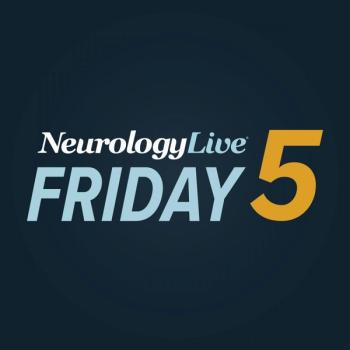
South Korea Nationwide Study Reveals Elevated Risk of Autoimmune Rheumatic Diseases in MS and NMOSD
Key Takeaways
- Patients with MS and NMOSD have a significantly higher risk of developing ARDs, with hazard ratios of 5.35 and 9.13, respectively.
- Specific ARDs such as Sjögren syndrome and systemic lupus erythematosus show particularly elevated risks in both MS and NMOSD.
A recently published population-based study reported that patients with MS or NMOSD had a significantly higher risk of autoimmune rheumatic diseases than matched controls.
A newly published analysis of national health data between 2010 and 2017 from the Korean National Health Insurance Service revealed that patients with multiple sclerosis (MS) and neuromyelitis optica spectrum disorder (NMOSD) had an increased risk of developing autoimmune rheumatic diseases (ARDs) compared with matched controls.1
Using diagnostic codes and registry information, researchers identified patients with MS and NMOSD and compared them with matched control groups at a 1:10 ratio based on age, sex, and comorbidities. After a 1-year lag period, the incidence rate of ARDs per 1000 person-years was 3.56 in patients with MS and 4.03 in patients with NMOSD, with hazard ratios (HRs) of 5.35 (95% CI, 3.50–8.19) and 9.13 (95% CI, 5.83–14.28), respectively, compared with controls.
In total, 1987 patients with MS and 2071 with NMOSD were included in the analysis. The MS group was 44.4% of men, and 16.5% were aged 65 or older; the most common comorbidity was hypertension (31.3%). In the NMOSD group, 35.3% were of men, and 12.0% were aged 65 or older; dyslipidemia was the most common comorbidity (24.1%). Follow-up duration after the 1-year lag averaged 4.5 years for MS and 4.3 years for NMOSD, with a maximum follow-up of 9 years.
“We found that during the approximately 4-year follow-up period, [patients with MS] had about a 5-fold higher risk of ARDs, and [patients with NMOSD] had about a 9-fold higher risk. Specific conditions such as Sjögren syndrome (SS) and systemic lupus erythematosus (SLE) showed particularly elevated risks in both diseases,” lead author Soonwook Kwon, MD, PhD, an associate professor of neurology at Inha University College of Medicine in South Korea, said to Mayo Proceedings.2
Authors noted that there were 32 ARD cases in the group of patients with MS and 36 in the group of patients with NMOSD. Compared with MS, the risk of ARD in NMOSD displayed as not significantly different (HR, 1.12; 95% CI, 0.70–1.89). Furthermore, a Kaplan-Meier analysis showed a significantly higher incidence of ARDs in MS and NMOSD versus controls (log-rank, P <.001), further confirming the findings.
READ MORE:
Among specific ARDs, authors noted that the highest HRs in MS were for Behçet disease (HR, 17.24), SLE (HR, 12.25), SS (HR, 6.16), and seropositive rheumatoid arthritis (RA; HR, 3.32). In NMOSD, SS had the highest HR (82.63), followed by SLE (30.85), Behçet disease (15.36), and seropositive RA (3.86). Notably, 3 patients with NMOSD were diagnosed with antiphospholipid syndrome, but none were observed in the control group. Age-stratified analysis in the group of patients with NMOSD showed higher ARD risk in younger patients, especially those aged 20 to 40 years (HR, 13.43), compared with older age groups.
“The increased risk of ARDs in MS and NMOSD suggests that there are common immunopathogeneses among these diseases. Immune dysregulation toward the Th17 or Th1 cells is considered one of the key contributors,” Kwon said.2 “Also, viral infections such as Epstein-Barr virus or lifestyle factors like vitamin D deficiency and smoking can be possible contributors. These findings emphasize the importance of monitoring MS and NMOSD patients for ARDs.”
All told, the study's limitations included low ARD event counts in each patient group, potential diagnostic bias because of higher healthcare utilization among patients with MS and NMOSD, and limited generalizability beyond the South Korean population. Additionally, authors noted that the absence of aquaporin-4 antibody data and lack of adjustment for disease-modifying therapies may have limited the interpretation of the results.
“Early detection of ARDs can improve patient outcomes by enabling timely intervention and personalized treatment plans. Also, because some medications are associated with development or aggravation of ARDs, this should be considered when deciding on medication for MS and NMOSD patients. The study emphasizes the need to be vigilant about their health and maintain regular follow-up with their healthcare providers,” Kwon said.2 “Further translational studies are needed to determine the common mechanisms between MS and ARDs, and also the effect of MS medications on ARDs should be further investigated. Thank you for your attention. I hope our findings contribute meaningfully to advancing patient care and fostering further research into MS and NMOSD.”
REFERENCES
1. Kwon S, Han KD, Jung JH, et al. Risk of Autoimmune Rheumatic Diseases in Multiple Sclerosis and Neuromyelitis Optica Spectrum Disorder: A Nationwide Cohort Study in South Korea. Mayo Clin Proc. 2025;100(5):801-813. doi:10.1016/j.mayocp.2024.11.028
2. Mayo Proceedings. Risk of Autoimmune Rheumatic Diseases in MS and NMOSD. YouTube. https://www.youtube.com/watch?v=3_hfYOFEqCs. Published May 1, 2025. Accessed May 8, 2025.
Newsletter
Keep your finger on the pulse of neurology—subscribe to NeurologyLive for expert interviews, new data, and breakthrough treatment updates.


































